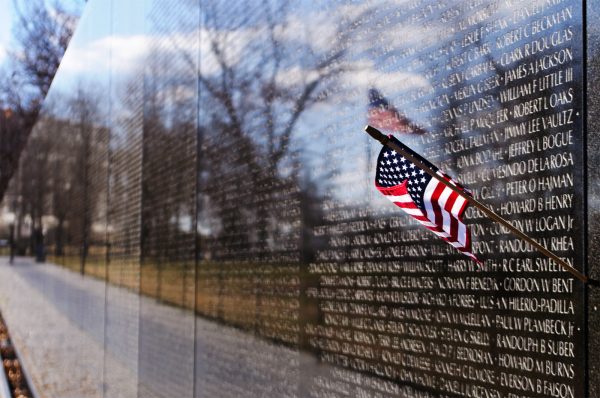
On January 19, 2021, less than 24 hours before their swearing-in, Joe Biden and Kamala Harris, and their spouses, Dr. Jill Biden and Douglas Emhoff, stood at the foot of the Lincoln Memorial to light the first COVID-19 memorial. Looking out over the Reflecting Pool, they led a moment of silence to honor the more than 400,000 American lives lost to the deadly virus. Following months of government inaction and widespread denial, this ceremony marked the first national commemoration of COVID victims. Despite its immediacy and ephemerality, the memorial shares much in common with other public memorials commemorating events of mass violence and loss of life. An interdisciplinary body of literature sheds light on public memorials’ complex, contested, and inherently political nature.
Temporality, Immediate response, and Grassroots memorials
Many memorials begin organically, in the immediate aftermath of a traumatic event that captures public attention. For instance, in 1997, following Princess Diana’s sudden death, Londoners left more than 60 million flowers outside her homes at Kensington and Buckingham Palaces. Similarly, in the wake of 9/11, grassroots memorials to the victims sprang up on streetlights and walls throughout New York, in open areas near the Pentagon, and in the fields near the Flight 93 crash site outside Pittsburgh. These spontaneous and temporary memorials reflected the visceral public grief experienced and mediated in real time, in public and collective ways.
- Erika Doss. 2008. The Emotional Life of Contemporary Public Memorials. Amsterdam University Press.
- Elizabeth L. Greenspan. 2003. “Spontaneous Memorials, Museums, and Public History: Memorialization of September 11, 2001 at the Pentagon.” The Public Historian 25(2): 129-132.
Official Memorials
When the immediate shock of traumatic events wears off, plans for official memorializations begin taking shape, often led by governmental bodies with input from both the public and private sectors. Around the globe, from Seoul, to Berlin, to Lower Manhattan, decisions about public memorials have grown increasingly democratic, as leaders seek out input and participation from community members and engaged groups. As with any other democratic process, memorial developments are subject to group conflicts and financial constraints. Decisions for public memorials such as the Vietnam Veterans Memorial in Washington, the Flight 93 National Memorial in Southeast Pennsylvania, or the Memorial to Murdered Jews of Europe in Berlin, were shaped by the interests of commemorated groups, long-term urban master plans, the goals of the tourism industry and the larger social significance memorials invoke among the broader public.
- Quentin Stevens and Karen Franck. 2015. Memorials as Spaces of Engagement: Design, Use, and Meaning. Routledge.
- Quentin Stevens. 2020. “Decision-making processes for public memorials in Seoul: How well do they reflect and contribute to South Korea’s democracy?”. Politics and Space 38(7-8):1328-1347.
- Quentin Stevens. 2013. “Masterplanning public memorials: a historical comparison of Washington, Ottawa, and Canberra.” Planning Perspectives 30(1):39-66.
- Tanovic, Sabina. 2019. Designing Memory: The Architecture of Commemoration in Europe, 1914 to the Present. Cambridge University Press.
The Contested Politics of Memory
While highlighting traumatic events and experiences, permanent and temporary memorials often shape public discourse around politically charged topics. For example, the NAMES Project AIDS Memorial Quilt, which blanketed the National Mall from 1987 to 1996, commemorating the predominantly queer victims of HIV/AIDS, helped break the silence around the deadly disease. Located immediately off the National Mall, the subterranean Vietnam Veterans Memorial – designed by the American sculptor Maya Lin – incited a public reckoning over an unpopular war that continues to stoke controversy.
Still, various communities affected by AIDS – including BIPOC and working class communities – have expressed concern over the installment’s predominantly-gay focus, arguing non-queer AIDS victims’ expereinces were being overlooked. Just last summer, following the killing of George Floyd at the hands of Minneapolis Police, cities across the US painted messages of support for global Black Lives Matter movement on city streets, sparking robust public debate on police violence and the use of public dollars on law enforcement. These debates are ongoing, signalling that rituals of commemoration are inherently fraught and contested processes.
Alongside loss of life, new forms of public commemorations have highlighted ‘experiences’ of trauma, abuse, and human rights violations and the survivors. With similar political goals, these politically-motivated installments aim to harness political energy around these salient topics in support of policy change, reparations, and broader societal awareness.
- Alexander, Jeffrey, Ron Eyerman, Bernhard Giesen, Neil J. Smelser, and Piotr Sztompka. 2004. Cultural Trauma and Collective Identity. Berkeley, CA: University of California Press
- Alison Atkinson-Phillips. 2020. Remembering experience: Public memorials are not just about the dead anymore.” Memory Studies 00(0):1-16.
- Carol Blair and Neil Michel. 2011. “The AIDS Memorial Quilt and Contemporary Culture of Public Commemoration.” Pp. 3-41 in Remembering the AIDS Quilt. East Lansing: Michigan University Press.
- Jeffrey A. Bennet. 2011. “A Stitch in Time: Public Emotionality and the Repertoire of Citizenship.” Pp. 133-159 in Remembering the AIDS Quilt. East Lansing: Michigan University Press.
- Jeffrey K. Olick. 2007. The Politics of Regret: On Collective Memory and Historical Responsibility. New York: Routledge.
- Robin Wagner-Pacifici and Barry Schwartz. 1991. “The Vietnam Veterans Memorial: Commemorating a Difficult Past.” The American Journal of Sociology 97(2):376-420.
- Jason Williamson. 2016. “A Survivor’s Perspective on Memory and Memorial Culture: Recollections on the 20th Anniversary of the Oklahoma City Bombing.” Social Science Quarterly 97(1):101-104.

Comments